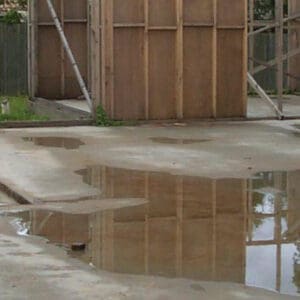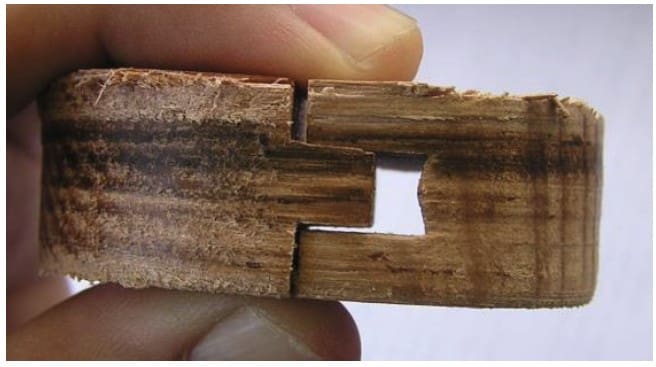Sound Related
HOLLOW SOUNDS IN TIMBER FLOORS
Timber floors are often directly fixed with adhesive over a concrete slab and it is not uncommon when walking on a floor to hear a hollow sound from some boards when walked on. This is often referred to as being a ‘drummy’ board in the floor. Due to these areas not sounding as solid as other areas of the floor, owners often have a concern that the adhesive has ‘let go’ and that this could spread across the floor. The reality is that many floors have some drummy boards and this does not necessarily mean that there is a problem with the floor.

The concrete slab and adhesive fixed floors
Concrete slabs are finished with trowelling machines sometimes referred to as helicopters.
These machines create a very smooth surface, however undulations do occur and this can necessitate grinding and levelling to make the slab sufficiently flat to accept the floor. Irrespective of whether levelling work is undertaken, some variations remain and may be in the order of 3mm over 3m, but that permitted will depend on the product being laid and the adhesive used.
Undulations in a new slab are not normally visible by looking at the slab but can be seen after rain when small puddles are visible. Timber flooring adhesive manufacturers allow for these slight variations by recommending the use of notched application tools that provide an adhesive height that is normally about 5mm or greater. This ensures that when adhesive is correctly spread, low spots in slabs have sufficient adhesive. Some adhesives are also of the foaming type and the expansion of the adhesive during the curing helps to provide a consistent adhesive layer between the slab and board.
Enough adhesive is generally spread to cover 3 or so rows of boards (to be laid within about 10 minutes) and adhesive is mainly spread at 90 degree to the direction of the flooring being laid. Flooring is bedded in place and may be pinned or weighted down until the adhesive is fully cured. With some installation methods boards are permanently pinned to the slab. Timber flooring adhesives used in direct fix applications are mainly moisture curing polyurethanes and these remain with some degree of flexibility, allowing the floor to expand and contract to a degree during seasonal relative humidity variations.

SQUEAKING IN SOLID AND ENGINEERED FLOORING
For as long as there have been timber floors there have been squeaks and it is generally accepted that many floors will make some noise when walked on. This includes traditional solid timber floors that may be laid direct to joists, to the more recent floated engineered floors. However as with most things there comes a point where too much is too much, and it becomes a concern to the owner. In solid strip floors laid on joists or battens, squeaks can come about from board-on-board rubbing or board-on-‘nail’ rubbing.
However, there are also instances where the squeaks are not associated with the flooring itself, this includes noise associated with the subfloor framing of either timber or steel and also the likes of noise from boards rubbing door joinery. Excessive squeaking should not be taken lightly as the annoyance created can be a legitimate concern that needs to be investigated and corrected as best as possible. This information sheet considers squeaks associated with solid T&G floors laid on joists or battens which may also have an intermediate sheet subfloor of particleboard or plywood.
Squeaks in traditional solid timber floors
Floors laid direct to joists and battens
In these types of installations, the squeaking is often associated with rubbing of board edges or rubbing of the board on the floor fixings. With board-on-board rubbing, a small amount of movement can cause noise. Even correctly milled boards can rub slightly and result in squeaking from the floor. However, often when squeaks occur the T&G joint is relatively loose and movement at board edges can be felt as the floor squeaks. Generally, a T&G tolerance at board edges of about 0.4 mm makes a good floor where boards will slot together easily and firmly enough so as to minimise movement at board joints and thereby minimise the possibility of squeaking from this source. [A tolerance of 0.4mm is about the thickness of a business card. Note however that the manufacturing standard for hardwood flooring does allow a tolerance of between 0.3mm and 0.6mm.] In addition to the tolerance at board edges, the tolerance on the end-match (tongue and groove on the end of the board) is also very important. It should be the same as board edges and again at the lower end of this tolerance. If the end match tolerance is too loose this can increase movement at board edges along from it and contribute to some squeaking.

